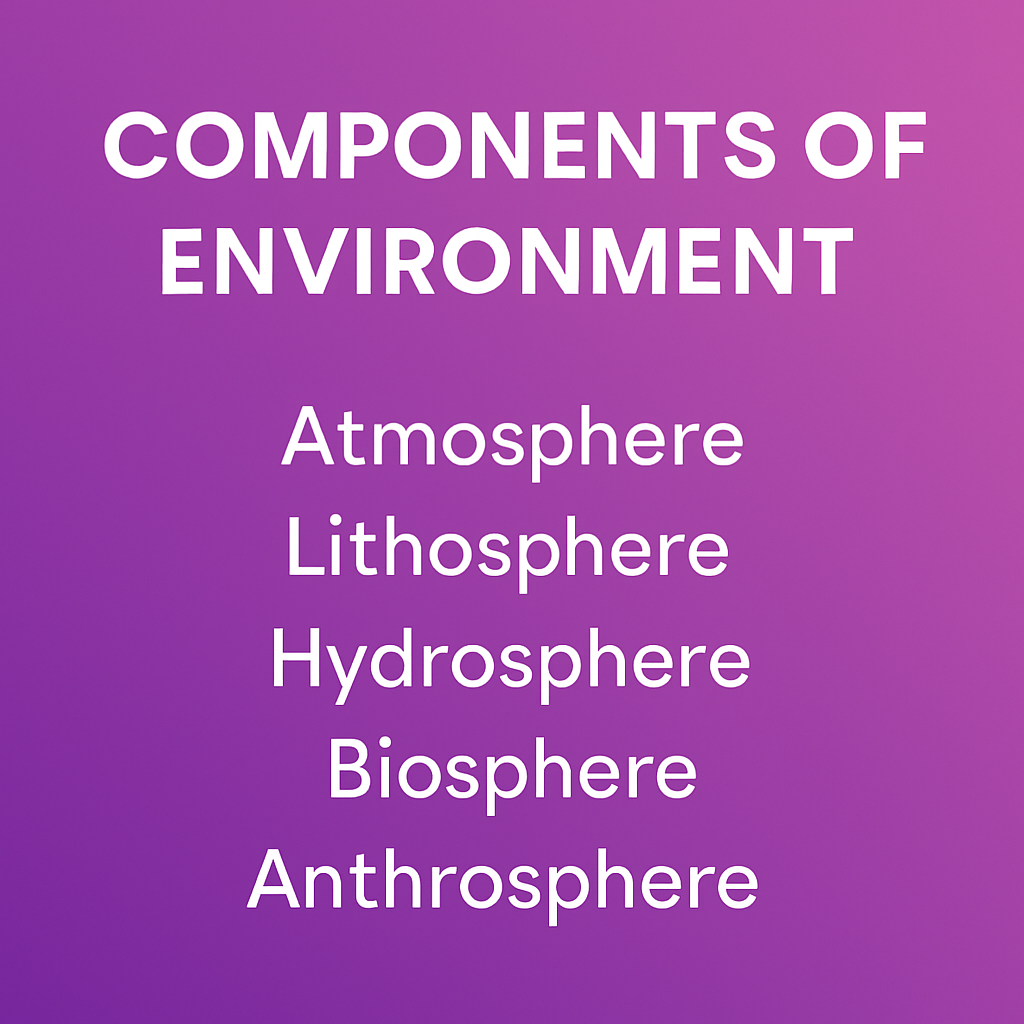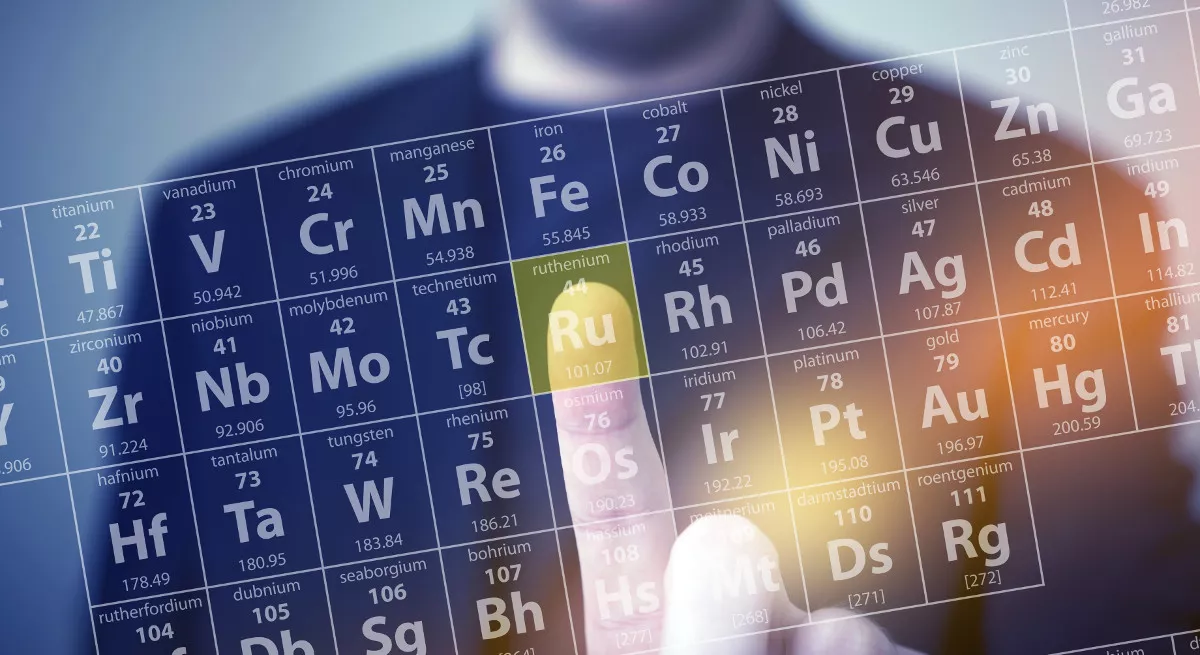
The environment is made up of various components that support and sustain life on Earth. These components include natural elements like air, water, soil, and sunlight. They also involve man-made elements such as buildings, roads, and technology. Each component plays a vital role in maintaining balance in nature. Environmental components are interconnected and constantly affect one another.
Changes in one component can impact others and the overall ecosystem. Understanding these components helps us protect and preserve our surroundings. Together, they create the foundation for all living and non-living systems.
The environment consists of the following components.
- Atmosphere
- Hydrosphere
- Lithosphere
- Biosphere
1. Atmosphere
The layer of gases that surrounds the Earth is called the atmosphere. It protects us from harmful solar radiation and helps regulate the planet’s temperature. It makes life possible on Earth. Composition of the atmosphere is given below:
Composition of Atmosphere
- Traces of H2, O3, CH4, He, Kr, and Xe are present in the atmosphere.
- Traces of moisture or water vapour are also present in it.
- Its thickness is about 1000 Km above the surface of the Earth.
- Half of its mass is concentrated in the lower 5.6 Km.
- The gases in the atmosphere absorb most of the cosmic rays and the major portion of the harmful electromagetic radiarion coming from the sun.
- The gases present in the atmosphere are essential for sustaining life on Earth. For example, Oxygen is required for breathing, Carbon dioxide is required for plant photosynthesis, and Nitrogen is used by nitrogen-fixing bacteria.
- Water vapour is responsible for sustaining various forms of life on Earth.
- The atmosphere also maintains the heat balance of the Earth.
2. Hydrosphere
The hydrosphere includes all water bodies, mainly, i.e., oceans, rivers, streams, lakes, polar ice caps, glaciers, and ground water reservoirs ( water below Earth’s surface).
- Oceans contain 97% of Earth’s water but because of high salt contents this water cannot be used for human consumption.
- The polar ice caps and glaciers consist of 2% of the Earth’s total water supply.
- Only 1% of the total earth’s water resources are available as fresh water. i.e., surface water, river, lake, steram and ground water. The fresh water is being used by agriculture(69%), industry (23%) and for domestic purpose (8%).
3. Lithosphere
” It consists of a rigid rocky crust of the Earth and extends to a depth of 100 Km.”
The mantle and core are the heavy interior of the Earth, making up most of the Earth’s mass. The 99.5% mass of the lithosphere is made of 11 elements, which are oxygen(~46.60%), Si(~27.72%. Al(8.13%), Fe(5.0%), Ca(3.63%), Na (2.83%), K (2.59%), Mg(2.09%), and Ti, H2, and P ( total less than 1 %).
- The elements present in trace amounts (0.1 to 0.02%) are C, Mn, S, Ba, Cl, Cr, F, Zr, Ni, Sr, and V.
- These elements mostly occur in the form of minerals.
4. Biosphere/Ecosphere
” Biosphere is the region of the Earth capable of supporting life.” It includes the lower atmosphere, the oceans, rivers, lakes, soils, and solid sediments that actively interchange materials with all types of living organisms, i.e., human beings, animals, and plants.
Define Ecosystem
Ecosystem is a smaller unit of biosphere which consists of community of organisms and their interaction with enviornment e.g., animals, planys and microorganism which lie in a definite zone and depend on the physical factors such as, water, and air.
5. Anthrosphere
The anthrosphere refers to the part of the environment made or modified by humans for their activities. It includes factory buildings, ships, and piers. While the oceans belong to the hydrosphere, piers are part of the anthrosphere because they are used by humans.
Conclusion
In summary, the components of the environment work together to create a balanced and life-sustaining system. Each element—whether natural or human-made—plays a vital role in maintaining ecological harmony. Understanding these components helps us recognize how human actions impact the environment and why sustainable practices are essential. By protecting and preserving environmental components, we ensure a healthier planet for current and future generations.


